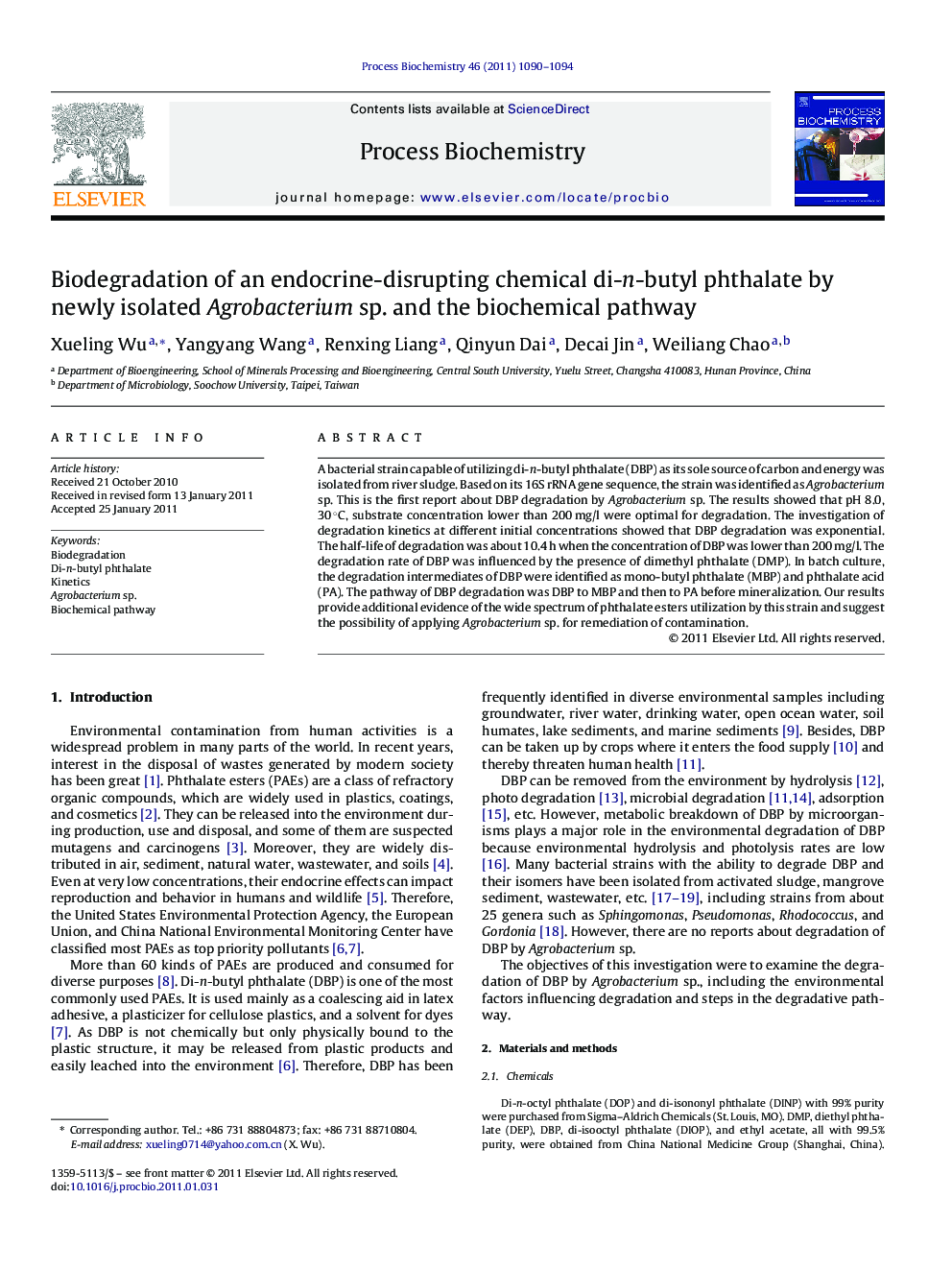| Article ID | Journal | Published Year | Pages | File Type |
|---|---|---|---|---|
| 10235627 | Process Biochemistry | 2011 | 5 Pages |
Abstract
A bacterial strain capable of utilizing di-n-butyl phthalate (DBP) as its sole source of carbon and energy was isolated from river sludge. Based on its 16S rRNA gene sequence, the strain was identified as Agrobacterium sp. This is the first report about DBP degradation by Agrobacterium sp. The results showed that pH 8.0, 30 °C, substrate concentration lower than 200 mg/l were optimal for degradation. The investigation of degradation kinetics at different initial concentrations showed that DBP degradation was exponential. The half-life of degradation was about 10.4 h when the concentration of DBP was lower than 200 mg/l. The degradation rate of DBP was influenced by the presence of dimethyl phthalate (DMP). In batch culture, the degradation intermediates of DBP were identified as mono-butyl phthalate (MBP) and phthalate acid (PA). The pathway of DBP degradation was DBP to MBP and then to PA before mineralization. Our results provide additional evidence of the wide spectrum of phthalate esters utilization by this strain and suggest the possibility of applying Agrobacterium sp. for remediation of contamination.
Related Topics
Physical Sciences and Engineering
Chemical Engineering
Bioengineering
Authors
Xueling Wu, Yangyang Wang, Renxing Liang, Qinyun Dai, Decai Jin, Weiliang Chao,
